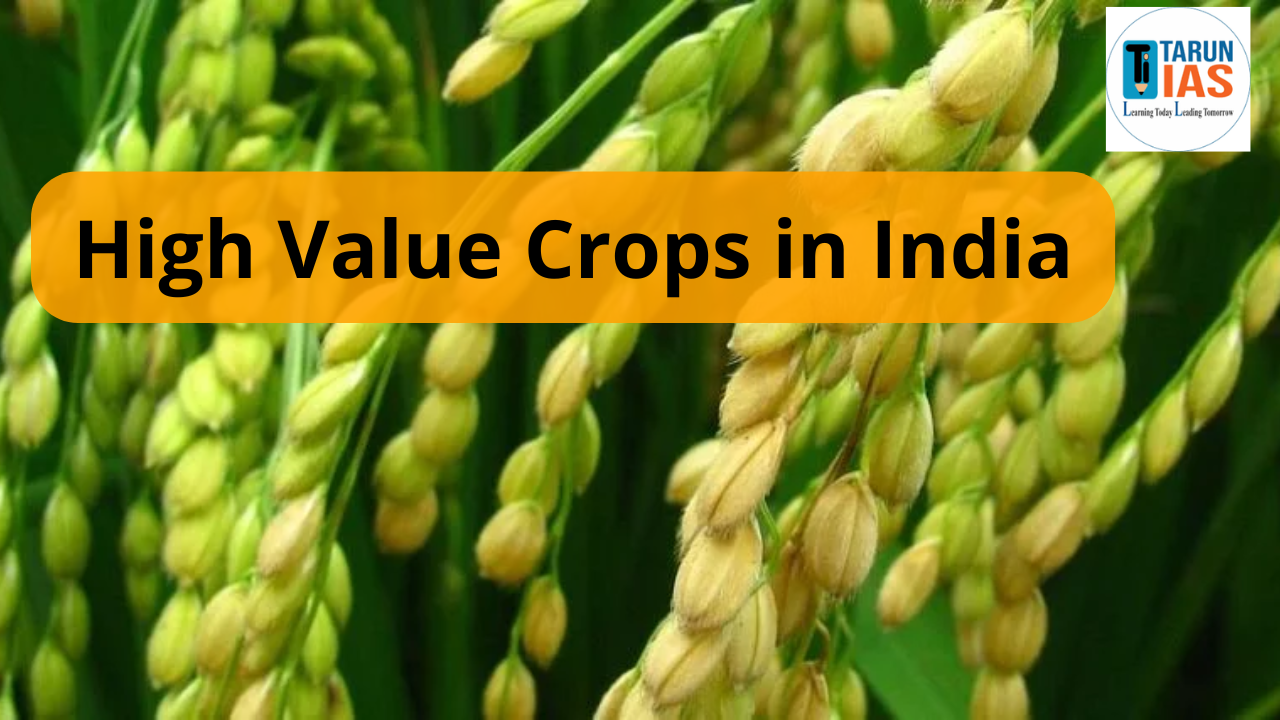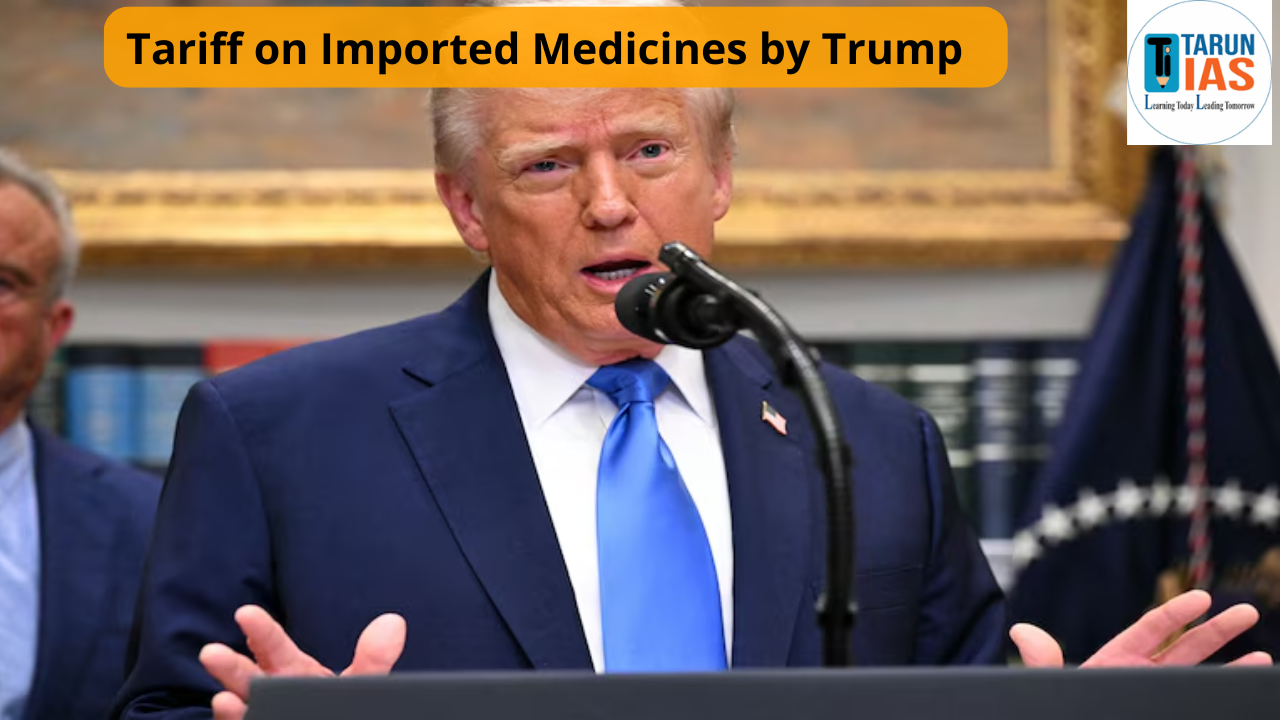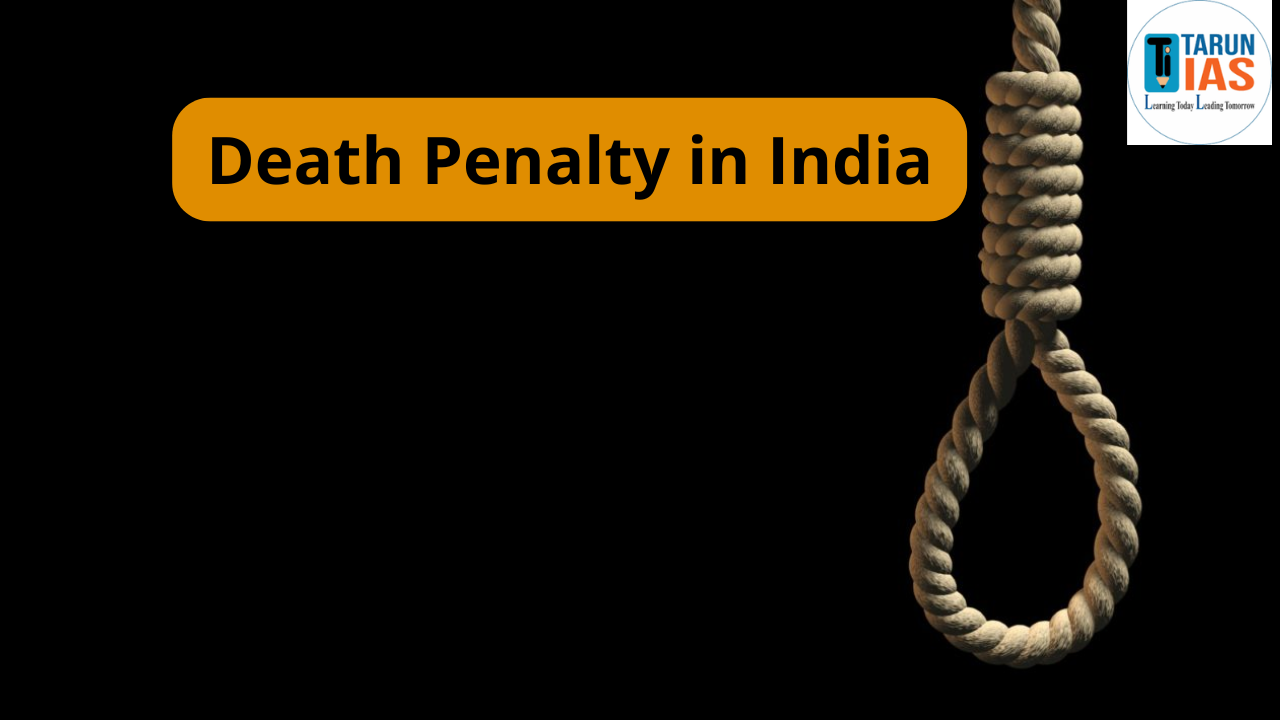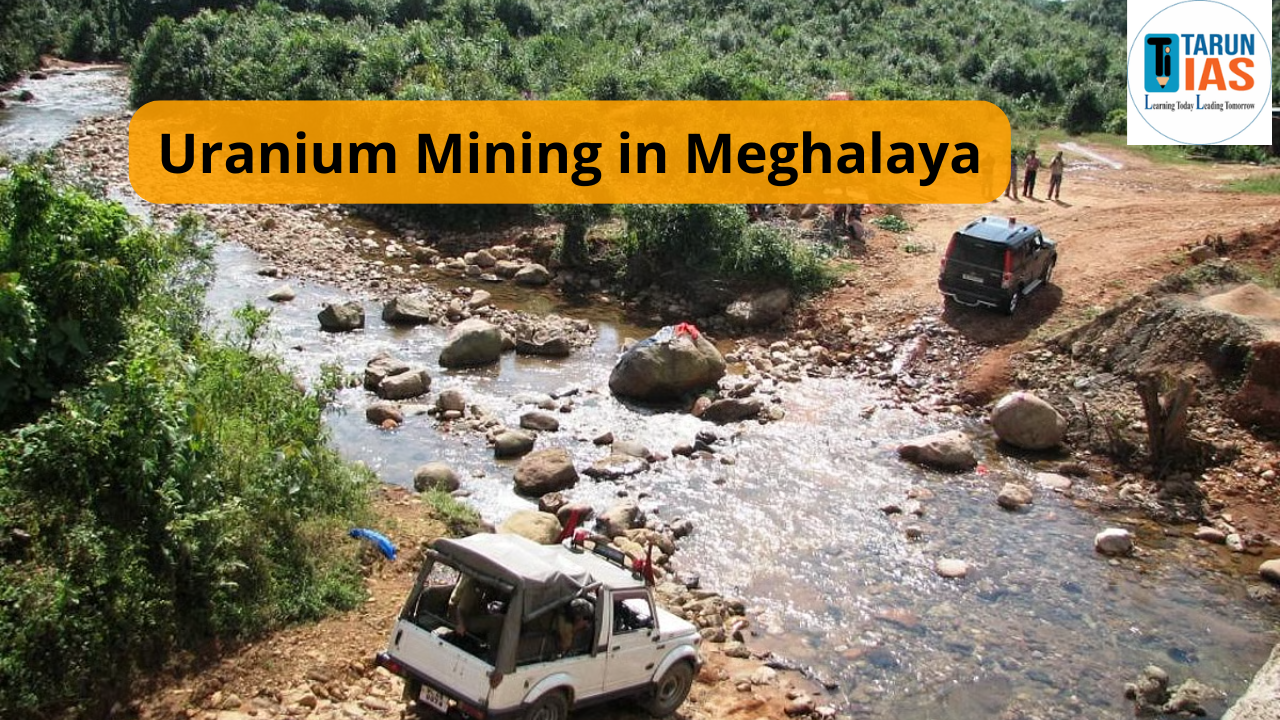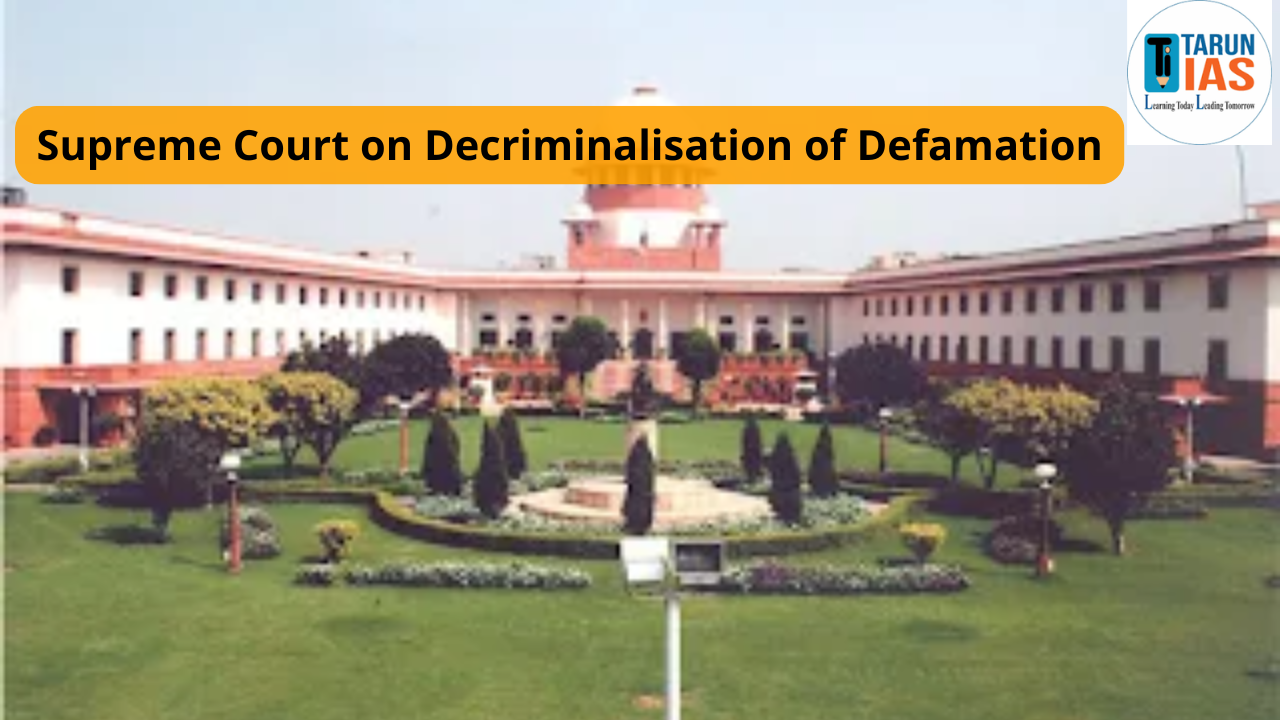Introduction:
- The recent visit by Bangladesh PM Sheikh Hasina marked the first state visit by a foreign leader during PM Modi’s third term.
- Over the last decade, Prime Ministers Sheikh Hasina and Narendra Modi have significantly advanced bilateral relations between India and Bangladesh, marking a “golden chapter” in their history.

History of India-Bangladesh Relations:
- Bangladesh Independence (High Phase):
- The foundation of India’s relationship with Bangladesh was laid during the 1971 Bangladesh Liberation War.
- India provided critical military and material support to assist Bangladesh in its fight for independence from Pakistan.
- The first independent government of Bangladesh, led by Sheikh Mujibur Rahman, was formed and administered from Theatre Road in Kolkata.
- Military Rule in Bangladesh (Low Phase):
- Relations soured after the assassination of Sheikh Mujibur Rahman in 1975, and subsequent military regimes took control.
- Anti-India sentiment rose during the military rules of General Ziaur Rahman (1975-1981) and General H.M. Ershad (1982-1991) over boundary disputes, insurgency, and water-sharing issues.
- Return of Parliamentary Democracy (Repair and High Phase):
- After the return of parliamentary democracy in 1991 and Sheikh Hasina coming to power in 1996, bilateral ties improved.
- A treaty on the sharing of Ganga waters was signed, and cooperation in trade, energy, infrastructure, connectivity, and defense was strengthened.
Significance of India-Bangladesh Relations:
- Geo-strategic:
- Bangladesh provides India with access to the Bay of Bengal and an important route for trade and connectivity with Southeast Asia.
- Example: India uses Chattogram and Mongla ports for transporting goods to and from its northeastern states.
- Geo-political:
- A stable and friendly Bangladesh is crucial for India’s security, particularly in counter-terrorism and border security.
- Bangladesh’s support is vital in India’s bid for a permanent seat on the UN Security Council.
- Economic:
- Bangladesh is a critical economy for India’s exports and bilateral trade.
- Example: Major Indian companies like Tata Motors, Marico, and Airtel have significant investments in Bangladesh.
- Strengthening economic relations with Bangladesh is crucial for India’s goal of becoming a $5 trillion economy.
- Cultural and Civilisational:
- Bangladesh has a significant Hindu Bengali population and many religious-cultural sites associated with India.
- International Cooperation:
- Active cooperation is crucial for the success of regional forums such as BIMSTEC, SAARC, and COPs to the UNFCCC.
- Example: Collaborative projects under BIMSTEC like the BIMSTEC Transport Connectivity Master Plan to improve connectivity and trade in the Bay of Bengal region.
Areas of Cooperation:
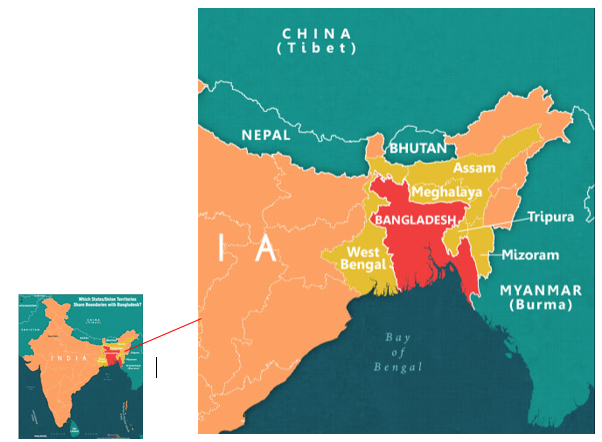
- Political Cooperation:
- Frequent bilateral visits and close relations between government heads.
- Examples: Indian PM’s visit to Bangladesh for their golden Jubilee celebrations of Independence and the awarding of the Gandhi Peace Prize 2020 to Sheikh Mujibur Rahman.
- Bangladesh’s PM Sheikh Hasina visited India to participate in the G-20 summit.
- Land Boundary Agreement (2015):
- India and Bangladesh swapped disputed enclaves, resolving a major long-standing dispute.
- The agreement allowed inhabitants of the enclaves to choose their country of residence.
- Example: The 2015 resolution of 162 enclaves, with 111 in India and 51 in Bangladesh, improving relations and border management.
- Economic Cooperation:
- Bangladesh is India’s largest trade partner in South Asia.
- Examples: Bilateral trade reached $18 billion in 2021-2022, and a joint feasibility study on a Comprehensive Economic Partnership Agreement (CEPA) was concluded in 2022.
- India has provided duty-free quota access to Bangladesh on all tariff lines except tobacco and alcohol under the South Asian Free Trade Area (SAFTA) since 2011.
- Example: Collaborations in sectors like textiles, pharmaceuticals, and IT services.
- Infrastructure Cooperation:
- India has extended Lines of Credit worth over $7 billion to Bangladesh since 2010.
- Examples: The Ahaura-Agartala rail link connects Bangladesh and India’s northeast through Tripura, facilitating cargo movement and boosting regional trade.
- ‘Maitri Setu’ bridge, a 1.9 km long bridge connecting Sabroom in India with Ramgarh in Bangladesh, enhances connectivity and trade.
- Example: The Petrapole-Benapole Integrated Check Post (ICP) facilitates smooth cross-border trade and passenger movement.
- Energy Cooperation:
- Bangladesh imports nearly 2,000 megawatts of electricity from India.
- Examples: The India-Bangladesh Friendship Pipeline, connecting Siliguri in West Bengal and Parbatipur in Bangladesh, will transport one million Metric Tonnes Per Annum (MMTPA) of High-Speed Diesel to Bangladesh.
- Example: Joint ventures in renewable energy projects like the India-Bangladesh Joint Venture Renewable Energy Project and the Adani Power project in Jharkhand to supply electricity to Bangladesh.
- Defence Cooperation:
- India-Bangladesh border of 4096.7 km is the longest land boundary that India shares with any of its neighbors.
- Joint exercises like Exercise Sampriti (Army) and Exercise Bongosagar (Navy) strengthen defense ties.
- Tourism Sector:
- Bangladeshis make up a large portion of tourists in India.
- Example: In 2017, the number of tourists from Bangladesh outnumbered those from Western Europe.
- Initiatives to promote medical tourism and cultural tourism, including visa facilitation and joint tourism packages.
- Example: The introduction of e-Tourist visas for Bangladeshi citizens has boosted tourism.
- Medical Cooperation:
- Bangladesh accounts for more than 35% of India’s international medical patients and contributes to over 50% of India’s revenue from medical tourism.
- Example: Collaborative efforts in combating diseases like COVID-19, including vaccine distribution and healthcare infrastructure support.
Areas of Tension:
- Sharing of Transboundary River Waters:
- India and Bangladesh share 54 common rivers, but only two transboundary river water-sharing treaties have been signed: the Ganga Waters Treaty (1996) and the Kushiyara River Treaty (2022).
- Example: The Teesta river water dispute remains unresolved, with Bangladesh seeking an equitable distribution of Teesta waters, which has not been agreed upon by India and the state of West Bengal.
- Deportation of Rohingyas:
- Conflicting interests in the deportation of Rohingyas to Myanmar.
- Example: India seeks to give primacy to deportation from its mainland first and then later facilitate deportation from Bangladesh to Myanmar.
- Cross-Border Terrorism and Infiltration:
- Issues like armed dacoity, fake money transfer, cattle smuggling, and prostitution raise internal security concerns.
- Drug Smuggling and Trafficking:
- Bangladesh remains a prime transit point for heroin trafficking from South Asia to Europe, as noted in the 2007 International Narcotics Control Board (INCB) report.
- Growing Chinese Influence:
- Bangladesh is an active partner in China’s Belt and Road Initiative, with significant Chinese investments in infrastructure.
- Examples: China has built 12 highways, 21 bridges, and 27 power and energy projects in Bangladesh.
- Attacks on Minorities:
- Ethnic attacks on Bangla-speaking Hindus in Bangladesh and attacks on Bangladeshis in India strain cultural relations.
Way Forward:
- Resolve Transboundary Water Disputes:
- Early resolution of the Teesta river dispute through a tripartite committee involving India, Bangladesh, and West Bengal.
- Conclude Free Trade Agreement (FTA):
- Finalize an FTA with Bangladesh before it loses its Least Developed Country status in 2026 to ensure continued duty-free and quota-free market access.
- Example: Monitor and prevent misuse of the FTA by China to dump goods in India through the Regional Comprehensive Economic Partnership (RCEP).
- Establish Joint Task Forces:
- Combat cross-border drug smuggling, human trafficking, and illegal immigration through joint task forces.
- Example: Joint efforts like the Coordinated Border Management Plan (CBMP) to improve border management and surveillance to curb infiltration and illegal activities.
- Example: Collaborative measures like the India-Bangladesh Joint Task Force on Countering Illicit Drug Trafficking enhance border security.
- Example: Implementing smart border management systems to enhance surveillance and security.
- Create Digital Connectivity Corridor:
- Establish high-speed internet connectivity, digital services, and e-commerce avenues between the two countries.
- Example: Collaborate on digital infrastructure projects like the SAARC Satellite Communication Network to support technological exchange and innovation.
- Restore Bangladesh’s Global Image:
- Help Bangladesh counter U.S. sanctions and improve its image by addressing democratic and human rights concerns.
- Example: Work closely with Bangladesh’s law enforcement agencies to reduce ethnic attacks on Bangla-speaking Hindus.
Conclusion:
- Strengthening India-Bangladesh relations is essential for developing North-East India, improving connectivity to Southeast Asia, and exploring the Indo-Pacific region.
- Deepening ties through mutual cooperation, resolving conflicts, and enhancing economic and social collaboration will benefit both nations.







